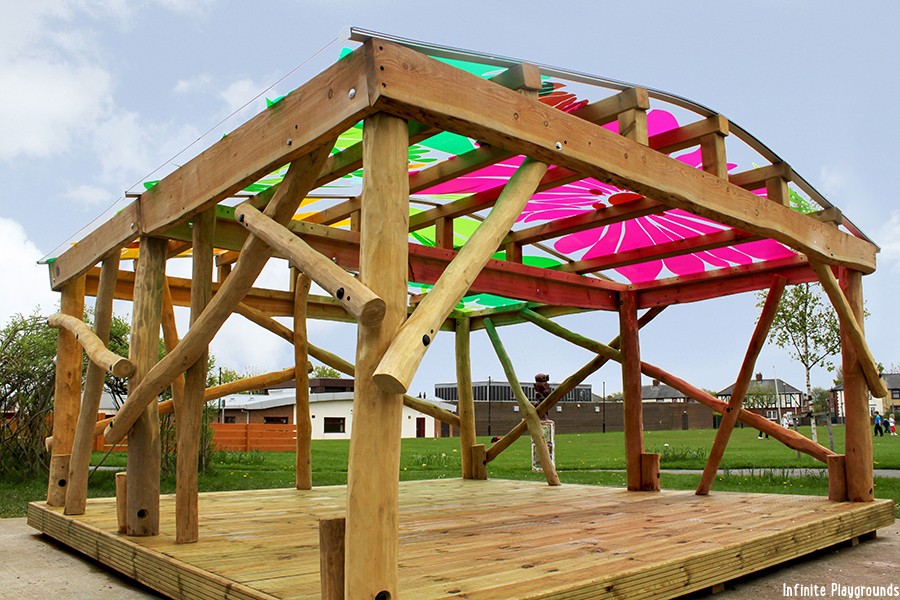Tips for taking learning outside the classroom

If you say the word classroom, what springs to mind? Most likely it is a room, indoors, with desks and chairs facing a whiteboard on the wall. It’s important to remember, however, that this isn’t the only environment that a child can learn in and, as research has shown, it may not be the most effective.
A lot of children these days are going home after school and spending time on their tablets and devices instead of playing outdoors like previous generations. Introducing outdoor play at school provides them with an opportunity to enjoy the outdoors and engage with nature.
In collaboration with Infinite Playgrounds, advocates of outdoor classrooms, we look at the benefits of learning outdoors and how to adapt lessons to teach outside.
What benefits come with learning outdoors?
As well as encouraging children to appreciate the outdoors, there are many benefits of learning outside of the traditional classroom.
A key benefit for children is the opportunity for them to exhibit some physical activity that wouldn’t be possible indoors. In the school yard or in a sensory playground, there is lots of space for the children to run around and play — raising their heartrate and keeping them active.
Being outdoors also encourages the use of imagination. There is plenty for children to discover outdoors; from plants they may not have seen before to minibeasts that catch their eye. Before the children learn what these are, they might use their imagination with their peers to guess what a certain animal is or what one of the plants is called. This stretch of imagination will become useful when they begin to write creatively or during drama exercises.
For example, as you’re teaching children about how plants grow, it will make the lesson much more memorable for them when they can touch the plants and the soil. 92% of teachers surveyed said that their pupils were more engaged with learning when they were outdoors.
Did you know that 85% of teachers reported that they saw a positive impact on their pupils’ behaviour when they were being taught outside? This could be down to the children finding more enjoyment in outdoor classrooms — 92% of pupils said that they preferred their lessons outdoors.
Other research has found that the introduction of outdoor classrooms could improve school attendance rates, too. If children are enjoying their lessons more, it is likely that they will have more motivation to come to school.
What can you do to take your lessons outdoors?
Although you might think it, teaching outdoors does not have to massively disrupt your curriculum, there are many ways that you can alter your lesson plans so that you can take them outside. The main thing about outdoor teaching is that it shouldn’t be overly teacher-controlled — it is important for children to be aware of the safety hazards outdoors. But apart from this, they should be encouraged to step outside of their comfort zones.
When you head outdoors, you become exposed to new resources. Teaching outside can be beneficial for the teacher as well as the children, 90% of staff found that outdoor teaching was useful for curriculum delivery.
Teaching maths
There are a range of ways that you can take your maths lessons outdoors. For the younger children, consider bringing shapes and counting outdoors and asking some of the following questions: How many petals does this flower have? How many circles can you spot? How many legs does the picnic table have? You could take pictures of the shapes to have a look at when you get back into the classroom.
If you teach an older age group, encourage them to measure each other doing the long jump or provide stop watches and let them time each other running a certain distance. When you get back to the classroom, teach the children how to plot these numbers on a graph.
Teaching English
If you’re a teacher of English, let the children to explore the area around them and draw some minibeasts that they can see. When you get back to the classroom encourage the children to write down a short story involving their pictures. For younger children, they could colour in the pictures when they get back and talk about a made-up story.
Teaching science
Science is everywhere when you’re outdoors! You can teach children how plants grow and even allow them to plant their own seeds, visiting them regularly and explaining the scientific processes behind the plant’s development. Children can also learn about heart rate through exercising outdoors.
As we can see, most lessons can be taken outdoors and the benefits are hard to ignore, the next time you are planning your week ahead consider taking the class outdoors and allow your pupils to push their boundaries.










Responses